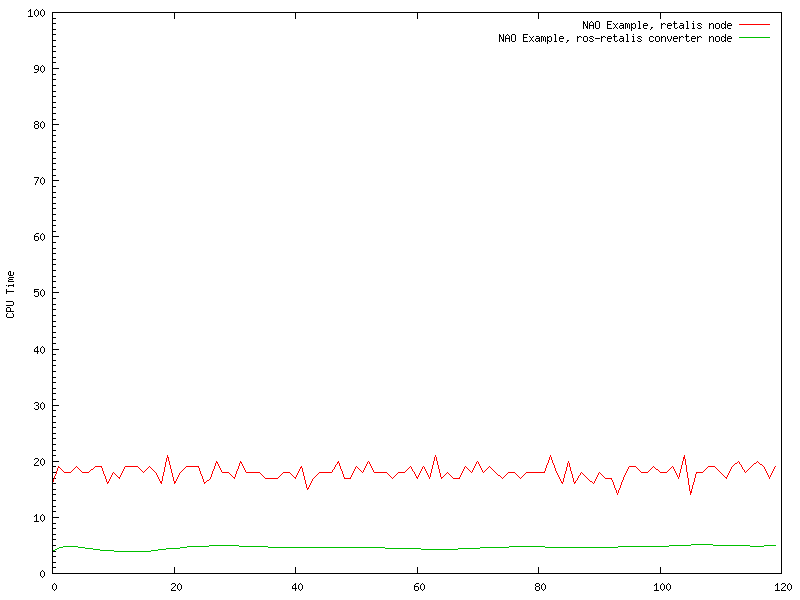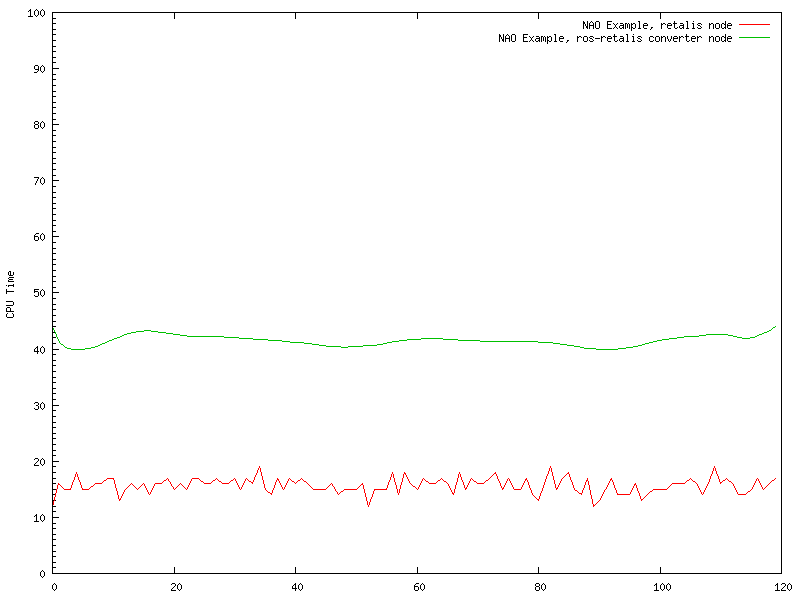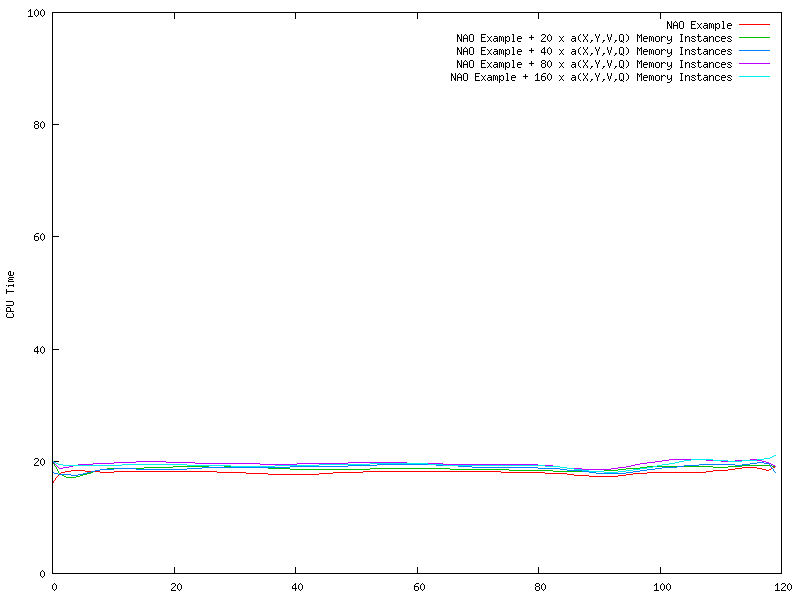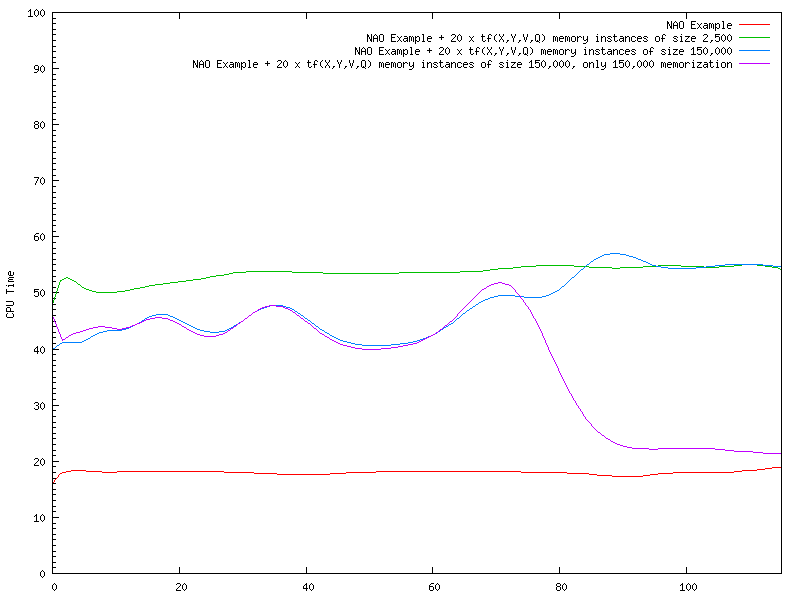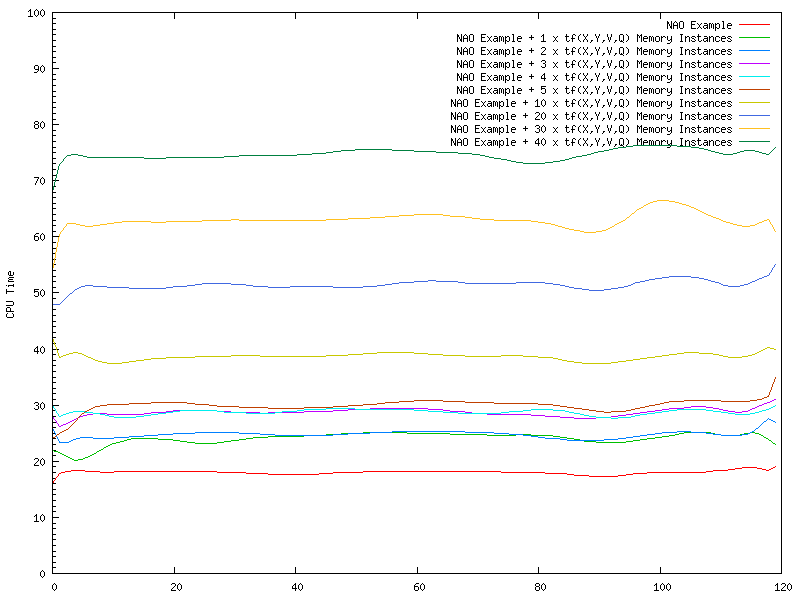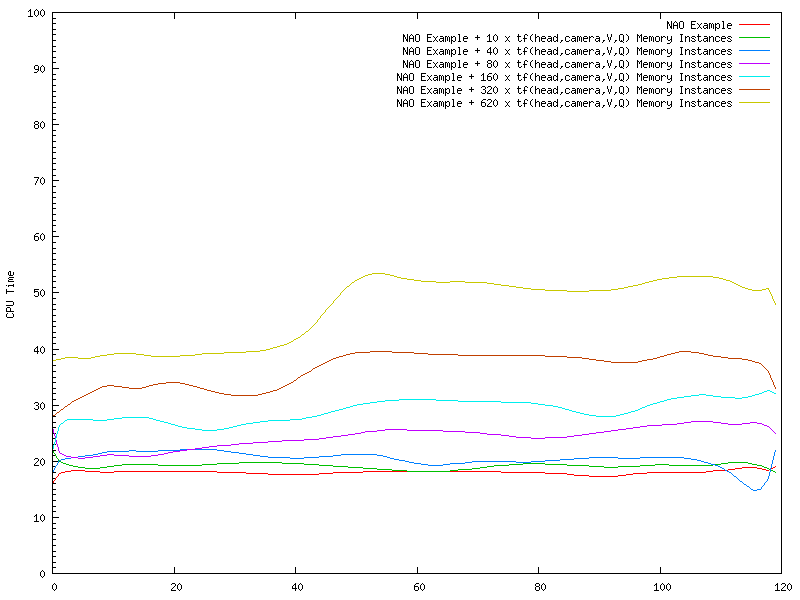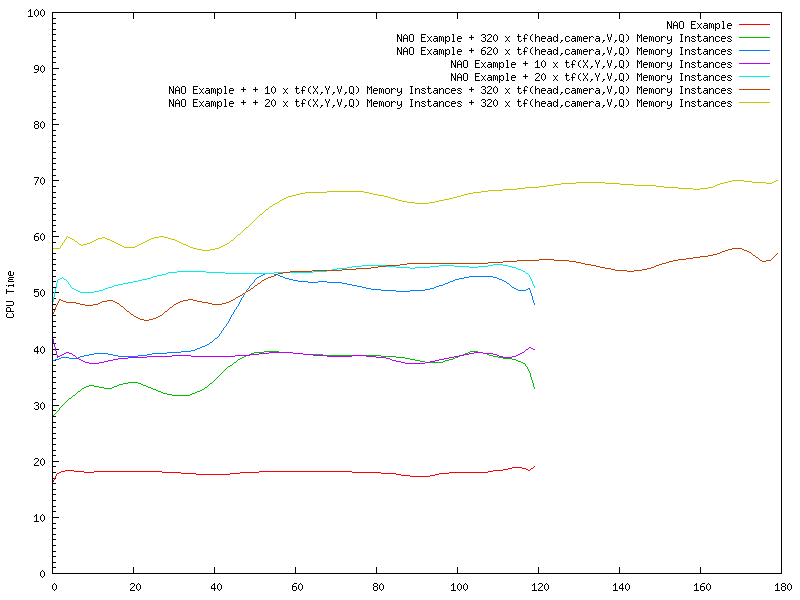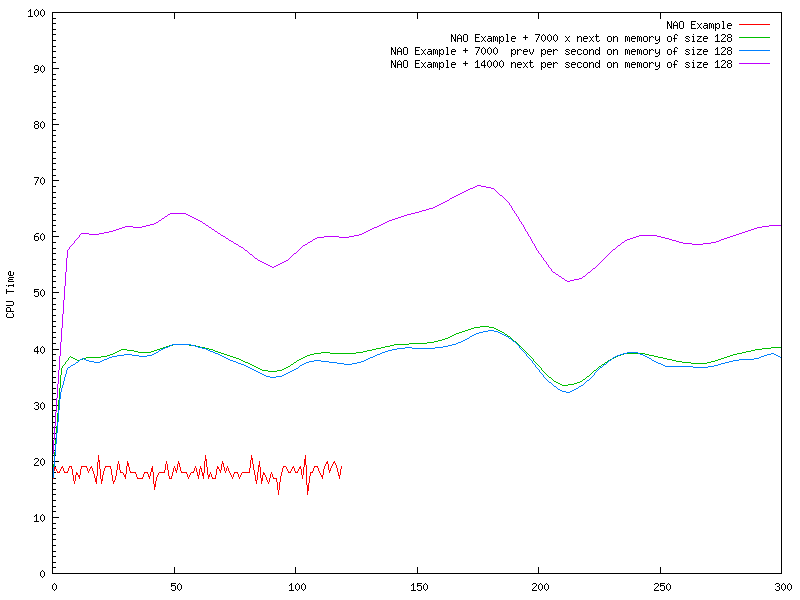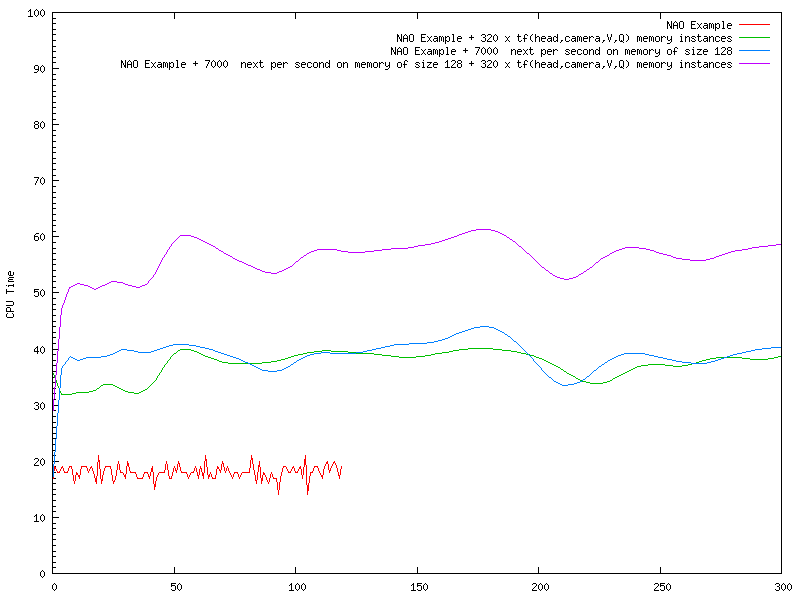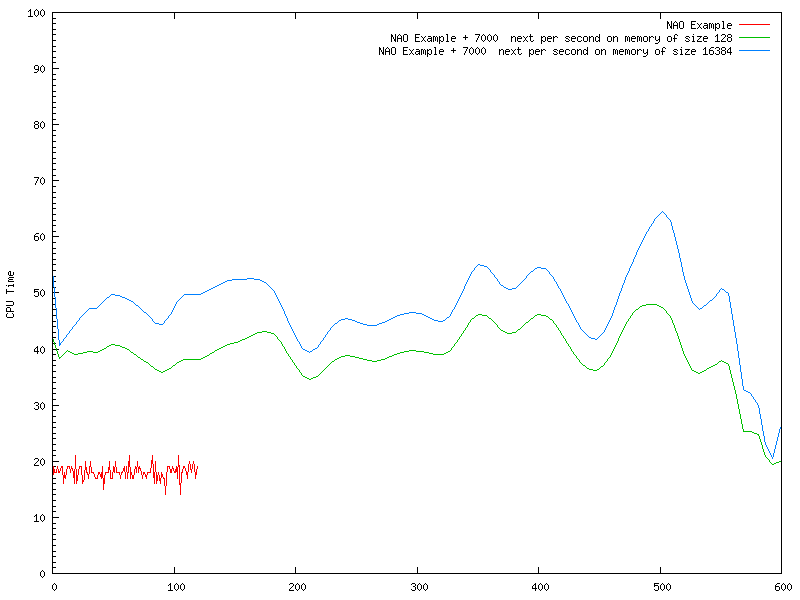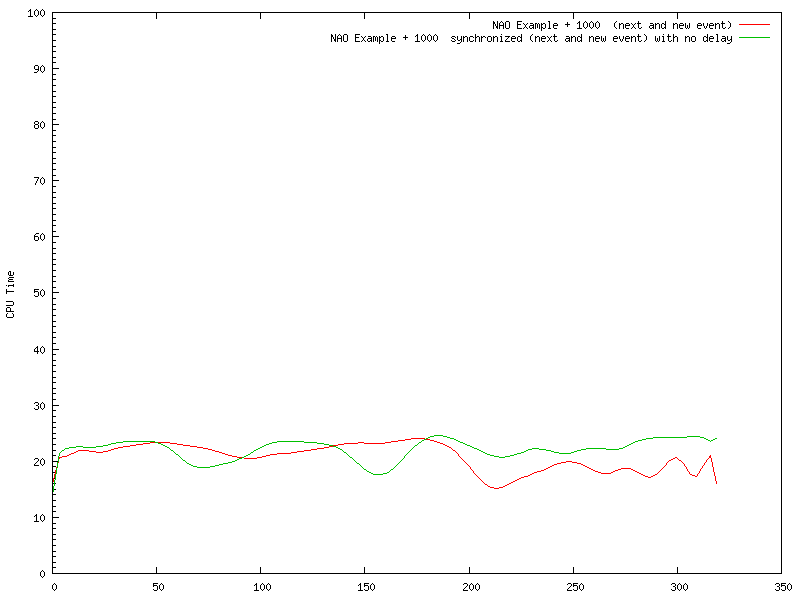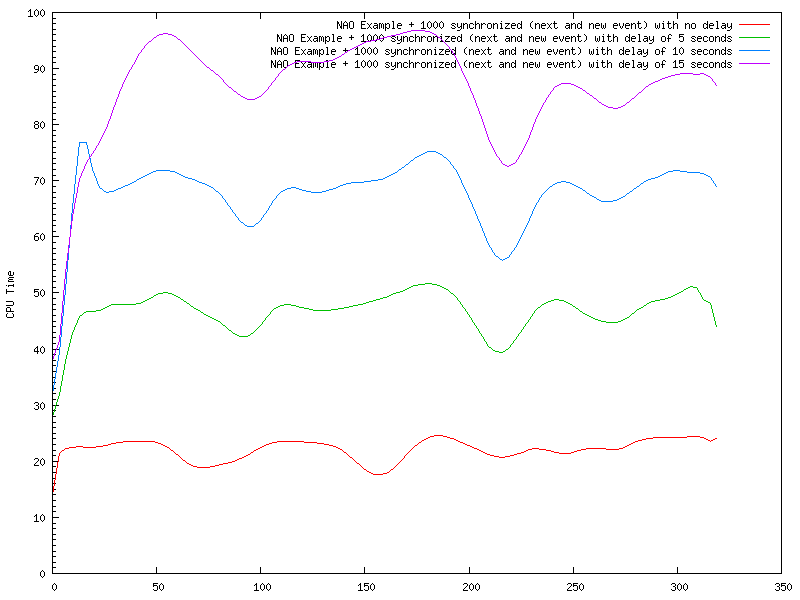Only released in EOL distros:
Package Summary
Retalis Language for Information Processing and Management in Autonomous Robot Software
- Maintainer: Pouyan Ziafati <pziafati AT gmail DOT com>
- Author: Pouyan Ziafati <pziafati AT gmail DOT com>
- License: GPLv3
- Source: git https://github.com/procrob/retalis.git (branch: devel)
Contents
Description
The Retalis language (Etalis for robotics) supports a high-level and an efficient implementation of a large variety of robotic sensory data processing and management functionalities.
- Publications:
- A journal paper is being reviewed.
- Older publications:
- P. Ziafati, M. Dastani, J-J. Meyer, L. van der Torre, Reasoning on Robot Knowledge from Discrete and Asynchronous Observations, AAAI Spring Symposium, Stanford, 2014.
- P. Ziafati, Y. Elrakaiby, L. van der Torre, H. Voos, M. Dastani, J-J. Meyer, M. Van Zee, Event-processing in autonomous robot programming, AAMAS, 2013
- Supported functionalities
Processing flow of data on the fly (by integrating the ELE language for complex event processing)
- filtering, transformation, synchronization
- temporal and logical reasoning
- Managing data in knowledge base and querying
- selective recording of data
- active memories
- prunning out-dated data
- state-based representation of knowledge based on discrete observations
- synchronization of queries over asynchronous reception of data
- logical reasoning
- Efficient implementation of the provided functionalities (see the Performance section)
- New C++ interface, significantly improving the performance over the previous Java interface
- An example with rosbag files
- coordinate transformation for NAO robot
Installation
It is assumed that the "retalis" package has been downloaded to the "catkin_ws/src" folder
Step 1: install OpenGL Mathematics (GLM)
- 1- sudo apt-get install libglm-dev
Step 2: install SWI-PL as a shared library
1- Download pl source code (6.2.2. for me) from http://www.swi-prolog.org/download/stable
- 2- Extract the tarball and edit the build.templ file as follows:
- Set PREFIX=/usr
- Set SUDO="sudo"
- Disable some library that might cause problem by uncommenting
- export DISABLE_PKGS="ssl xpce zlib"
- Uncomment the
- EXTRACFG+=" --enable-shared"
- 3- Run build.templ. (as root)
- 4- Make sure libswipl.so has been created. In my system, it is found at
- /usr/lib/swipl-6.2.2/lib/i686-linux/libswipl.so
Step 3: install Retalis as follows
- 1- In the CMakeLists.txt file, change "/usr/lib/swipl-6.6.6/include" and "/usr/lib/swipl-6.6.6/lib/x86_64-linux" to refer to the include and lib folders of your SWI-PL installtion, respectively
- 2- catkin_make (in your catkin workspace)
- 3- roscd retalis
- 4- In the install.py file, change '/home/robolab/catkin_ws' and '/usr/lib/swipl-6.6.6/lib/x86_64-linux' to refer to the catkin workspace and the lib folder of your SWI-PL installation, respectively
Step 4- Run the install.py file as root (you might first need to make the install.py file executable by: sudo chmod +x install.py)
Execution
After you program retalis as described below, rune it by:
1 roslaunch retalis retalis.launch
Programming
Retalis is programmed using three files, located in the application_source folder of the retalis package:
- pub_sub.xml : subscribes retalis to ros topics. It also specifies the message types of topics to which retalis may publish messages.
- goalPredicates.txt: creates a set of subscriptions and memory instances. A subscription subscribes a ros topic to retalis by a policy to selectively send data to that topic. A memory instance selectively records and maintains data in the retalis knowledge base based on a policy
- eventRules.txt: specifies rules to perform complex event-processing functionalities and to query the retalis knowledge base
Nodes (Run-Time Configuration)
retalis
This node implements main functionalities.Services
add_output_subscription (retalis/AddOutputSubscription)- adds a subscription
- cancels a subscription
- adds a memory instance
- deletes a memory instance
retalis_ros_interface
This node automates the conversion between ros messages and retalis eventsServices
add_input_subscription (retalis/DeleteInputSubscription)- subscribes retalis to a ros topic
- unsubscribe retalis from a ros topic
Tutorials
This section describes retalis using two examples.
Example 1 (coordinate transformation for NAO robot)
The usecase is to position the recognized objects in the world coordination frame and reason on high-level events occurring in the environment.
Setup
rosbags can be downloaded from nao1.bag and nao2.bag. To run the bagfiles, you need to have face_recognition, ar_pose and NAO Messages installed to have required message types.
- input to retalis:
- recognized objects (ar_pose markers) positioned relative to the robot's top camera.
- recognized faces
- transformation among coordinate frames
- output from retalis:
- position of objects in the environment
- events about situations of the environment
Input from ROS (see pub_sub.xml)
The following clause in pub_sub.xml subscribes retalis to the tf topic:
1 < subscribe_to name="tf" msg_type="tf/tfMessage" />
Similarly, the following clauses in pub_sub.xml subscribe retalis to messages of recognized faces and objects.
1 <subscribe_to name="face_recognition/feedback" msg_type="face_recognition/FaceRecognitionActionFeedback"/>
2 <subscribe_to name="ar_pose_marker" msg_type="ar_pose/ARMarkers"/>
Messages received by retalis from the subscribed topics are automatically converted to events. For example, the following message of type tf/tfMessage
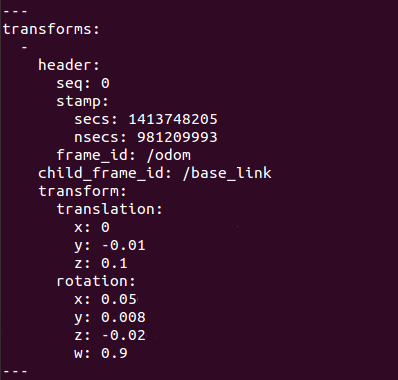
is converted to the following event:

Events are time-stamped according to header times of ros messages. If a message does not have a header, it is time stamped with ros::Time::now(). The format of time-stampes are datime(Y,M,D,H,Min,S,Counter) where Counter encodes nanoseconds since seconds (i.e. stamp.nsec in ros messages). For example, the above tf/tfMessage message contains a list of geometry_msgs/TransformStamped messages (only one here). While each geometry_msgs/TransformStamped message is time-stamped, the tf/tfMessage itself does not have a header. Therefore, the corresponding event is stamped with the current time.
Event-Processing (see EventRules.txt)
The following rule calls the split_tf function for every tf__0__tfMessage event received by retalis.
1 null_event do split_tf(Transforms) <- tf__0__tfMessage(Transforms).
This function is implemented as a prolog rule in eventRules.txt. It splits the Transforms, its input list of geometry_msgs/TransformStamped messages, into the elements and generates a new tf event for each. Each tf event is time-stamped according to header file of the corresponding geometry_msgs/TransformStamped message. For instance, when retalis receives the above tf__0__tfMessage event (in section 4.1.2), this rule generates the following event:
1 tf('“/odom”', '“/base_link”',[0,-0.01,0.1], [0.05,0.008,-0.02,0.9])
The event is time-stamped with (1413748205, 981209993) represented in the datime format.
Each ar_pose/ARMarkers message from ar_pose contains a list of recognized objects, each represented by a ar_pose__0__ARMarker message. The following rule generates a separate event for each object.
1 split_ar_pose(Markers) <- ar_pose__0__ARMarkers(Header,Markers).
- Such an event is of the following form
1 ar_marker(Seq,MarkerName,[[P1,P2,P3],[Q1,Q2,Q3,Q4]],Sec,NSec)
where Name represents a recognized object and (Sec,NSec) encodes the time of recognition. This time corresponds to the time of taking the picture at which the object was recognized. This time is taken from the header file of the corresponding ar_pose__0__ARMarker message. The events is also time stamped with (Sec,NSec).
Retalis integrates the 'ELE language of the Etalis system for complex event processing. ELE supports temporal and logical reasoning on flow of events. Please see http://code.google.com/p/etalis/ for publications and for examples of rules implementing various event-processing functionalities.
Memorization (see goalPredicates.txt)
The following clause creates a memory instance.
1 memorize(tf('"/odom"', '"/base_link"', V, Q),[], tf(V, Q), odom_base, 2500)
This memory instance keeps the history of events of the form tf( '"/odom"','"/base_link"',V,Q), specified by the first argument. The second argument specifies a list of conditions, being empty here. A memory instance only records events that satisfy the conditions. The third argument specifies the format for recording events. The fourth argument is the Id of the memory instance. The last argument is the size. Only the last 2500 events of the given form are maintained by this memory instance.
The tf('“/odom”', '“/base_link”'}},[0,-0.01,0.1], [0.05,0.008,-0.02,0.9]) event from Section 4.1.3 matches this memory instance. This events is recorded by this memory instance as tf([0,-0.01,0.1], [0.05,0.008,-0.02,0.9]).
Querying (see eventRules.txt)
We saw in Section 4.1.3 that the split_tf and split_ar_pose functions are implemented as Prolog clauses. The eventRules.txt file can include an arbitrary Prolog program to encode a domain knowledge. We also saw in Section 4.1.4 that how memory instances are used to maintain histories of events
The Prolog program in eventRules.txt together with the the dynamic knowledge maintained by memory instances represent a Prolog-based knowledge base. This knowlede base can be queries by event-processing rules, for instance, as in Section 4.1.3. It can be also queried directly by a ros service (in our ToDo list).
Queries to the knowledge base are normal Prolog queries, but with two main differences, described in the following sections.
Accessing Memory Instances (see eventRules.txt)
A memory instance is accessed by its Id. There are three types of access:
sequential access is using the access_mem(Id,Event,[T1,T2]) term. Given an Id of the memory instance, this term backtracks over the events recorded in the memory instance. Backtracking is in the decreasing order of events' occurrence times: the last recorded event is accessed first. In backtracking, the variables Event and [T1,T2] are unified with events and their ocurrence times, maintained in the memory instace. An event orrurrence time is a time interval [T1,T2]. For atomic events, T1 is equal to T2.
previous access is using the prev(Id, Event, T1, T2, T) term. Given an Id and a time point T, the last event occurring before T, recorded in the memory instance Id, is accessed. The variables Event and [T1,T2] are unified with that event and its occurrence time.
next access is using the next_inf(Id, Event, T1, T2, T). It accesses the first event, occurring after time T. There are other types of next access too. For example, the next(Id,Event,T1,T2,Ts,Te) term accesses the first event occurring during the time interval [Ts,Te].
An example of using prev and next terms is in implementation of the interpolate_tf(Id,T,Pos) function, in the eventRules.txt. The input values to this function is the Id of a memory instance, keeping the history of some tf events, and a time point. The tf events represent observations of the transformation between two coordinate frames over time. From these observations, this function interpolates the transformation between the frames at time T. This is implemented as follows. The last observation before T and the first observation after T are found using the prev and next terms. Then the position is linearly interpolated by making a function call to the OpenGL Mathematics library that has been integrated with retalis.
The transform_marker(RelativePos,Time,AbsolutePose) function in eventRules.txt uses the interpolate_tf function to position an object in the world reference frame. Given RelativePos, the position of an object relative to the camera at time Time, this function computes AbsolutePose, the position in the world, as follows. First, it changes the time format from ros time to datime. Then, it interpolates the transformation between /odom-to-/base_link, base_link-to-torso, torso-to-Neck, Neck-to-Head and Head-to-CameraTop_frame at the time Time. Third, it applies these transformations on the RelativePos by making a function call to the OpenGL Mathematics library. It is assumed that the /odom frame is aligned with the world reference frame.
Query Synchronization (see eventRules.txt)
We saw in Section 4.1.6 that how calling interpolate_tf(odom_base,t,Pos) function interpolates the position between the /odom and /base_link coordination frames at time t. This function uses next and prev terms to access the first and the last observations after and before t, respectively. To interpolate the position at t, the position should have been observed, at least once, after t. The observations, tf/tfMessage messages here, are received asynchronously. Therefore, the interpolate_tf(odom_base,t,Pos) function should be evaluated only after the odom_base memory instance has been updated with an event occurring after t. This is realized in retalis using a synchronized event, as follows.
The synchronized(Event,Query,SynchConditions) function, performs the Query, when the SynchConditions are satisfied and then generate the Event. Consider the following clause from eventRules.txt:
1 syncronized(
2 geometry_msgs__0__PoseStamped(std_msgs__0__Header(Seq, [Sec,NSec], Name),geometry_msgs__0__Pose(geometry_msgs__0__Point(P11,P12,P13),geometry_msgs__0__Quaternion(Q11,Q12,Q13,Q14))),
3 transform_marker(RelPose,[Sec,NSec],[[P11,P12,P13],[Q11,Q12,Q13,Q14]]),
4 [[odom_base,Z],[base_torso,Z],[torso_neck,Z],[neck_head,Z],[head_cam,Z]]
5 )
6 <- ar_marker(Seq,Name,RelPose,Sec,NSec) where (Z is Sec + (NSec * 0.000000001) ).
This rule computes the position of recognized markers in the world and is read as follows. For each ar_marker event, specified in line 6, the position is computed by calling the transform_marker function, as in line 3. After computing the position, an event of the following form is generated, specified in line 2:
1 geometry_msgs__0__PoseStamped(std_msgs__0__Header(Seq, [Sec,NSec], Name),geometry_msgs__0__Pose(geometry_msgs__0__Point(P11,P12,P13),geometry_msgs__0__Quaternion(Q11,Q12,Q13,Q14)))
Such a PoseStamped event encodes the marker's name, its position in the world and the time of recogntion. The SyncConditions are the followings, specified in line 4:
1 [[odom_base,Z],[base_torso,Z],[torso_neck,Z],[neck_head,Z],[head_cam,Z]]
These conditions specify that the transform_marker function should be evaluated, only after all odom_base, base_torso, torso_neck, neck_head and head_cam memory instances have been updated, at least once, with events occurring after time Z. The time Z is the time of recognition of the marker.
Retalis performs the synchronization of events in an event-driven and efficient way. The generation of a synchronized Event is posponed, until the syncConditions are satisfied. Postponing an event does not postpone the generation of other events and postponed events are generated as soon as necessary conditions are met.
Subscription (see goalPredicates.txt)
The following clause in goalPredicates.txt creates a subscription:
1 subscribe(geometry_msgs__0__PoseStamped(std_msgs__0__Header(_,_,'"4x4_1"'),_),[],_,marker1,m1)
The subscription subscribes the topic marker1 to the PoseStamped events in which Name is '"4x4_1"'. Such events are generated by the synchronized rule, presented in Section 4.1.7. They contain the position of the marker 4x4_1 in the world coordination frame. The id of the subscription is m1 which can be used to cancel the subscrition at any time.
Performance Evaluation
This section evaluates the performance of retalis on the NAO application described in Example 1 (Section 4.1). Retalis is executed on an XPS Intel Core i7 CPU@ 2.1 GHz x 4 laptop running ubuntu 12.04 LTS. The performance is evaluated by measuring the CPU time used by the retalis program. In the following graphs, the vertical axis represents the percentage of CPU time and the horizontal axis represents the running time in seconds. The usage of the CPU time is logged every second and is plotted using "gnuplot smooth bezier".
The NAO application includes the following tasks:
On-flow processing: tf__0__tfMessage events are split and transformed into tf events, each containing data about the transformation between a single pair of coordination frames (see Section 4.1.3). In addition, ar_pose__0__ARMarkers events are split into ar_marker events, each containing data of the recognition of a single object. The data about transformation among pairs of coordinate frames are published with frequencies from 8 to 50 hertz. There are in average 7 objects perceived per second. In total, retalis generates and processes about 1900 events per second.
Memorizing and forgetting: there are 5 memory instances of size 2500, recording the transformation between /odom-to-/base_link, base_link-to-torso, torso-to-Neck, Neck-to-Head and Head-to-CameraTop_frame coordination frames, respectively. These transformations are received with frequencies of 10, 50, 10, 10 and 50 Hz, respectively.
Querying memory instances: for each observed object O, memory instances are queries to calculate the /odom-to-O transformation, as in Section 4.1.6. For each object, each of the five memory instances is queried once using a prev term and once using a next term. As there are in average 7 objects perceived per seconds, memory instances are queried 70 times per second.
- Synchronization: a query is delayed in case any of the necessary transformations can not be interpolated from the data received so far. Retalis monitors the incoming events and performs the delayed queries as soon as all data necessary for their evaluations are available.
Subscription: In average 7 objects are perceived per second, their positions with respect to the \odom frame are calculated and are published on the corresponding topics.
The following figure shows the CPU time used by the retalis and retalis-ros-converter nodes when running the NAO example. The retalis node calculates the position of objects in real-time. It processes about 1900 events, memorizes 130 new events and prunes 130 outdated events per second. It also queries memory instances, 70 times per second. These tasks are performed using about 18 percent of the CPU time. In this experience, the retalis node has been directly subscribed to the tf and ar_pose_marker ros topics. The retalis-ros-converter only subscribes retalis to the face_recognition/feedback topic and converts and publishes events about objects' positions to ros topics. To have this setup, comments out the subscriptions to tf and ar_pose_marker topics in the pub-sub.xml file and instead, set the subscribe_tf_and_ar_pose_ boolean variable in the retalis_interface.cpp file to true. You should also recompile the package.
As we saw in Section 4.1.2, retalis provides an easy way to subscribe to ros topics and automatically convert ros messages to events. This is implemented by the retalis-ros-converter node. The implementation is in Python and is realized by inspecting classes and objects at runtime and therefore is expensive. The following figure shows the CPU time used by the retalis and retalis-ros-converter nodes for the NAO example, when the retalis-ros-converter is used to subscribe to tf and ar_pose_marker topics. This results show that while the automatic conversion among messages and events are desirable in a prototyping phase, the final application should implement it in C++ for performance reasons. We will investigate the possibility to re-implement the retalis-ros-converter node in C++.
Forgetting and Memorizing
This section evaluates the performance of the memorizing and forgetting functionalities. We measure the CPU time for various runs of the NAO example where the numbers and types of memory instances are varied. We discuss the performance of memory instances by comparing the CPU time usages in different runs.
When an event is processed, updating memory instances includes the following costs:
- Unification: finding which memory instances match the event
- Assetion: asserting the event in the database for each matched memory isntance
- Retraction: retracting old events from memory instances that reached their size limit.
The following figure shows the CPU time for a number of runs where up to 160 memory instances are added to the NAO example. These memory instances record a(X,Y,Z,W) events. Among the events processed by retalis, there are no such events. The results show that the increase in CPU time is negligible. This shows that a memory instance consumes CPU time only if the input stream of events contains events whose type matches the type of events the memory instance records.
In the following figure, the green and blue lines show the CPU time for cases where 20 memory instances of type tf(X,Y,V,Q) are added to the NAO example. These memory instances match all tf events, about 1900 of such is processed every second. The size of memory instances for the green line is 2500. These memory instances reach their size limit in two seconds. After this time, the CPU time usage is constant over time and includes the costs of unification, assertion and retraction for updating 20 memory instances with 1900 events per second. The size of memory instances for the blue line is 150,000. It takes about 80 seconds for this memory instances to reach their size limit. Consequently, the CPU time before the time 80 only includes the costs of unification and assertion, but not the costs of retraction. After the time 100, the CPU usages of both runs are equal. This shows that the cost of a memory instance does not depend on its size. The purple line shows the CPU time for the case where similarely there are 20 memory instances of type tf(X,Y,V,Q). However, these memory instances record events until their reach their size limit. We added a condition for these memory instances such that after reaching their size limit, they perform no operation when receiving new events. After the time 100, the CPU time is constant about 23 percent, being 5 percent more than the CPU time of the NAO example, represented by the red line. This 5 percent increase represents the unification cost. This also shows that the costs of about 38000 assertions and 38000 retractions per second is about 30 percent of CPU time. In other words, 2500 memory updates (i.e. assertions or retractions) are processed using one percent of CPU time.
The following figure shows the CPU time for a number of runs where up to 40 memory instances of type tf(X,Y,Z,W) and size 2500 are added to the NAO example. The red line at the bottom shows the CPU time for the NAO example. We make the following observations. Adding first 10 memory instances to the NAO example increases the CPU time about 20 percent. After that, adding each set of 10 memory instances increases the CPU time about 13 percents. This shows that the cost grows less than linearly. The implementation of memory instances is in a way that the cost of an assertion or a retraction can be assumed constant. This means that the unification cost for the first set of memory instances is the highest. In other words, the unification cost per memory instance decreases when the number of memory instances are increased.
The following figure shows the CPU time for a number of runs where up to 640 memory instances of type tf(head,camera,Z,W) and size 2500 are added to the NAO example. The events matching these memory instances are received with the frequency of 50 Hz. We make the following observaitons. First, it takes 50 seconds for these memory instances to reach their size limit. After 50 seconds, these memory instances reach their maximum CPU usages, as the costs of retraction is added. Second, each memory instance filters 1900 events per second recording about two percents of them. The cost of 640 memory instances is about 35 percent of CPU time. Third, the unification cost per memory instance is decreased when the number of memory instances are increased.
The following figure compares the costs of different types of memory instances. The purple line shows the CPU time for the case where there are 10 memory instances of type tf(X,Y,V,Q). The green line shows the CPU time for the case where there are 320 memory instances of type tf(head,cam,V,Q). We observe that the costs of both cases are equal. The memory instances in the former case record 19,000 events per second (i.e. 10*1900). The memory instances in the latter case filter 1900 events per seconds for tf(head,cam,V,Q) events, recording 16000 events per second (i.e. 320*50). The results show the efficiency of the filtering mechanism.
The brown line shows the CPU time for the case where there are 10 memory instances of type tf(X,Y,V,Q) and 320 memory instances of type tf(head,cam,V,Q). Comparing it with the green and purple lines shows that the CPU time usage of these memory instances is less than sum of the CPU usages by 10 tf(X,Y,V,Q) memory instances and 320 tf(head,cam,V,Q) memory instances. This shows that the unification cost per memory instance is decreased when the number of memory instances are increased, even when the memory instances are not of the same type.
Querying
Retalis queries are Prolog-like queries executed by the SWI-Prolog system. The following evaluates the performance of next and prev terms and the synchronization mechanism which are specific to retalis.
Querying Memory Instances
This section evaluates the performance of prev and next terms used to access event records in memory instances. Retalis optimizes the evaluation of these terms as follows. It keeps track of the number of event records in each memory instance. The prev and next terms are evaluated by a binary search on event records. An access to an event record by its number takes a constant time. Consequently, the evaluation of prev and next is done in logarithmic time on the size of the respective memory instance.
The green line in the following figure shows the CPU time of the NAO example adapted as follows. There is an additional tf(head,cam,V,Q) memory instance of size 128. This memory instance is queried by 1000 next terms for each recognition of an object. In average, 7000 next terms are evaluated per second. The blue line visualize the CPU time of a similar program in which 7000 prev terms are evaluated per seconds. The figure shows that the costs of the evaluations of prev and next terms are similar. The purple line shows the CPU time of the case where 14,000 next terms are evaluated per second. We observe that the cost grows linearly, as expected.
The blue line in the following figure visualizes the CPU time of the case where 7000 next terms are evaluated per second. The green line visualizes the CPU time of the case where there are 320 tf(head,cam,V,Q) memory instances. The purple line visualizes the CPU time of the case where 7000 next terms are evaluated per second and there are 320 tf(head,cam,V,Q) memory instances. We observe that the cost of accessing a memory instance does not depend on existance of other memory instances.
The green line in the following figure visualizes the CPU time of evaluating 7000 next terms per second on a memory instance of size 128. The blue linevisualizes the CPU time of evaluating 7000 next terms per second on a memory instance of size 16384. The size of the memory instance in the latter case is the power of two of the size of the memory instance in the former case. The increase in the CPU time for the latter case, with respect to the NAO example, is less than two times of the increase in the CPU time for the former case.
Synchronization
The synchronization mechanism is implemented as follows. Before evaluating a query, memory instances are checked whether they are up-to-date with respect to the query. If the query cannot be evaluated, it is recorded as a postponed query. For each postponed query, retalis generates a set of monitors. Monitors observe memory update events. As soon as all necessary events are in place in memory instances, the query is performed. The implementation of monitors are similar to the implementation of memory instances.
The red line in the following figure visualized the CPU time of the NAO example where in each second, 1000 next queries on a memory instance of size 2500 are evaluated. In addition, for each next query, a new event is generated. The green line visualizes the CPU time of a similar case where the next queries are synchronized. This experiment is conducted in a way that no query needs to be delayed. Coparing these two cases shows that when queries are not delayed, the synchronization cost is negligible.
The following figure shows the CPU time of four cases. In all these cases, 1000 synchronized next queries are evaluated and 1000 events are generated in each second. The red line visualizes the case where no query is delayed. The green line visualized the case where queries are delayed for 5 seconds. In this case, the memory instance queried by a next term has not yet received the data necessary to evaluate the query. The query is performed as soon as the memory instance is updated with relevant information. There are 1000 queries per seconds, each delayed for 5 seconds. This means there exist 5000 monitors at each time. These monitors observe 1900 events processed by retalis per second. We observe that for such a large number of monitors observing such a high-frequency input stream of events, the increase in CPU time is less than 30 percent.
Subscription
The implementation of the subscriptions is similar to the implementation of memory instances. The only difference is that an event matching a memory instance is asserted to the knowledge base for that memory instance, and an old event is retracted if the memory instance is full, but an event matching a subscription is delivered to the respective subscriber. Consequently, the costs of subscriptions include the unification cost, discussed in section 5.1, and the costs to publish events to subscribed ros topics.
On-Flow Processing
On-flow processing functionalities in retalis are performed by Etalis. Etalis execution model is based on decomposition of complex event patterns into intermediate binary event patterns (goals) and the compilation of goals into goal-directed event-driven Prolog rules. As relevant events occur, these rules are executed deriving corresponding goals progressing toward detecting complex event patterns.
Information flow processing systems such as Etalis are designed for applications that require a real-time processing of a large volume of data flow. Please see Etalis publications for the evaluation of the performance of on-flow functionalities. The evaluation results show, in terms of performance, Etalis is competitive with respect to the state-of-the-art on-flow processing systems.







